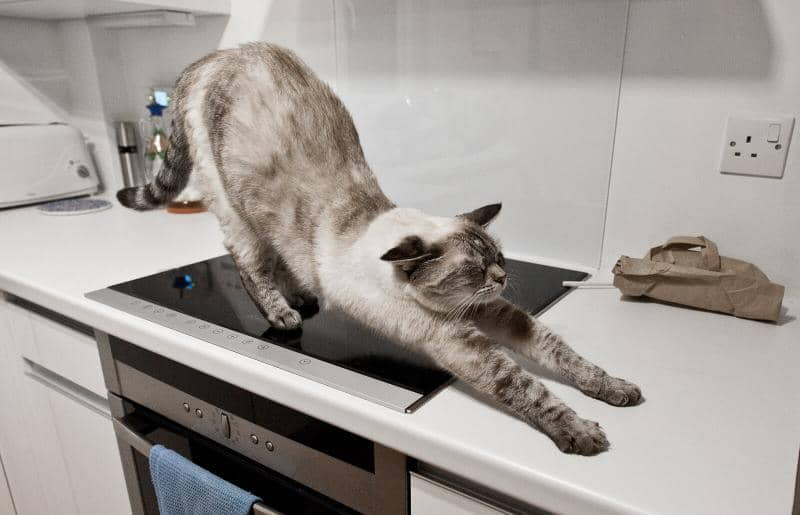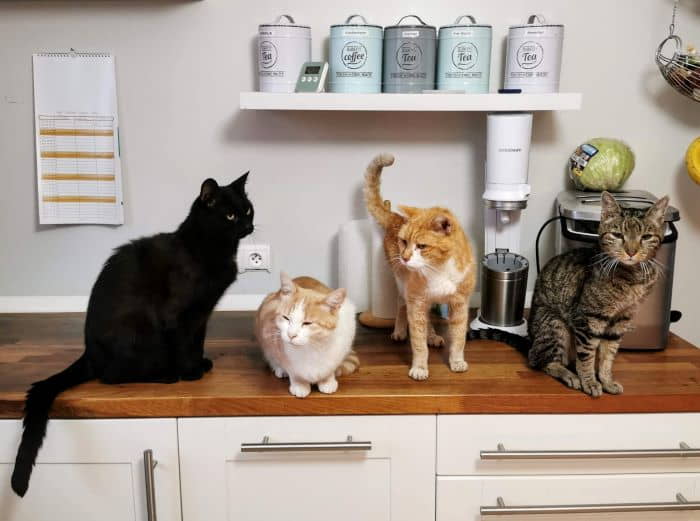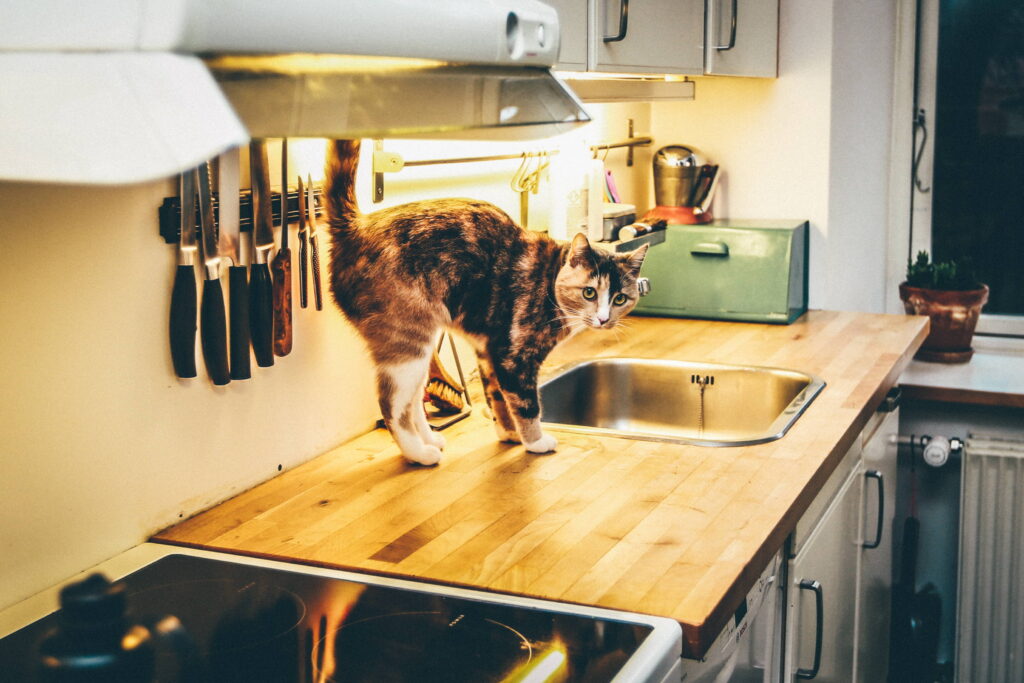Every morning Martha, a stately Maine coon mix, sashayed across the breakfast table and made a beeline for her favorite windowsill, shedding cat hair into the butter and flinging litter granules from her long furry tail along the way. When Mitch noticed clay particles floating in his coffee mug for the third morning in a row, he erupted. “No more cats on the kitchen table!” he bellowed-and Martha seemed to get the message. But by 7:30 the next morning, Martha’s march began anew. Short of barring her from your kitchen, Mitch wondered how he could put an end to Martha’s “surface shenanigans.”

Reward Removal
Before you can train your cat to stay off a forbidden surface, you must decipher why she’s drawn to it in the first place. Whether tabletops, counters or infant changing tables, cats like high platforms from which they can view their territory. If these surfaces provide other pleasures, as well, all the better. Is there leftover food on the stove? Is the kitchen table next to the window that overlooks the birdbath? Don’t let her eat straight out of the pan. When surfaces offer such tempting rewards, it’s hard to convince a cat to keep away.
First, remove the rewards that make a surface so appealing. If your cat enjoys snacking on crusty remains left in cooking pans, let them soak in the sink before sitting down to a meal. If she likes to lounge on the sunlit windowsill at the end of the kitchen table, “remove” the rewarding sunshine by pulling the shades down or putting up shutters.

Compromising Positions
Next, offer alternatives. If birdwatching is rewarding for your indoor cat, setup a feeder or birdbath near a windowsill that you don’t mind her sitting on-in the family room or home office, perhaps. Don’t complain that she perches upon forbidden surfaces if you haven’t provided her with some that she can use. Multilevel scratching posts-complete with resting areas and hideouts-make perfect viewing platforms for territory surveillance. As for the counter surfer looking for food rewards, if she’s healthy and fit, feel free to share the occasional leftover-but put the goodies in her bowl. Is the changing table warm, cozy and comfortably padded? Cats are creatures of habit.
They will repeat behaviors until new ones are established-so break the routine. Martha had been watching birds from the kitchen windowsill for years, and it would take more than some shouting and shoving to interrupt her routine. If she found herself shut out of the kitchen every morning, however, Martha would most likely develop a new habit. She would probably scratch and cry at the door for the first week, but if that didn’t work-even if she became increasingly obnoxious as her efforts intensified-she would eventually seek out something more rewarding. Perhaps birdwatching from that newly padded windowsill in the bedroom would prove more pleasurable.

Unwelcome Mats
Make the off-limits surface unwelcoming. Cats have tactile preferences; most do not like surfaces that are sticky, slick, cold or prickly. If your cat likes to nap in an empty crib, place a crib-sized sheet of cardboard, covered with doublesided tape, atop the mattress. For at least two weeks, leave the cardboard in place whenever the crib is not in use, and the cat will most likely seek out a more comfortable space. Sticky Paws is another product you can put on the table temporarily – it’s like double-sided tape that is safe for furniture and cats do not like the feel of it.
Thick plastic sheeting, upside-down plastic rug protectors and tinfoil are all coverups cats don’t like. It’s a bit unwieldy for a while, but you get one of the plastic carpet runners that you buy in office supply stores and place it upside down on the table so the nubs are sticking up. Cats don’t enjoy walking on this and will avoid getting up on the table.

Noisemaking motion sensors, flashing lights and water or citronella sprays may serve a similar purpose. Note: If your cat is skittish, tense or easily aroused, do not use a method that employs startling elements-it may provoke her to attack the first living being she meets.
Sometimes it’s just better to “manage” the situation. Close nursery doors. Refrigerate leftover food; if your countertops are clean, there’s no reason for the cat to visit. Move the kitchen table away from the window so Martha will have to leap directly onto the windowsill to watch the daily avian frolics. Mitch could also invest in a covered butter dish and drink his coffee from a travel mug.
There are many ways to address feline surface conflicts; the method you choose depends on the situation, the cat’s persistence and the strength of your resolve.
Wondering about How to Stop Kitten Biting? Check it out on our latest post!
